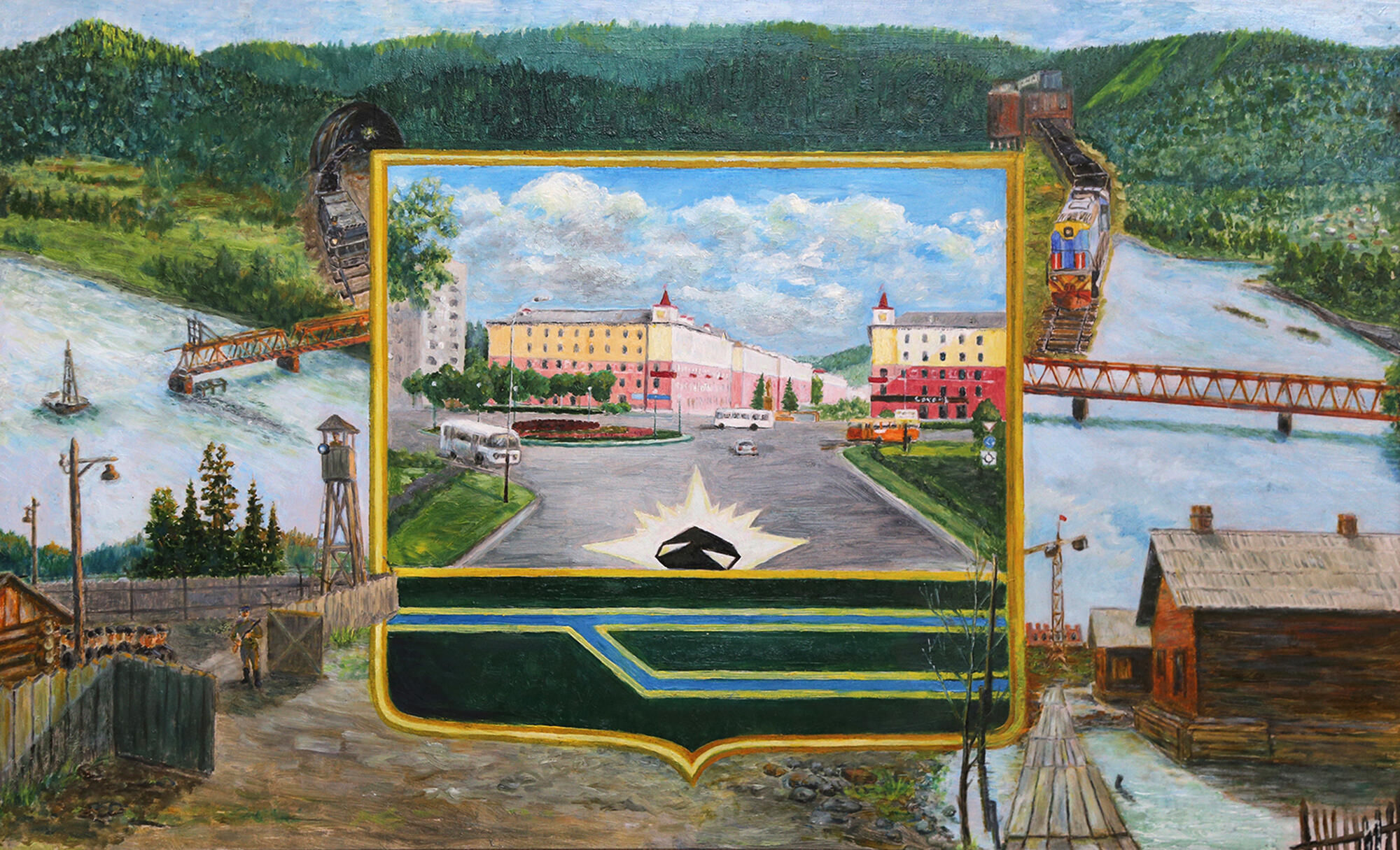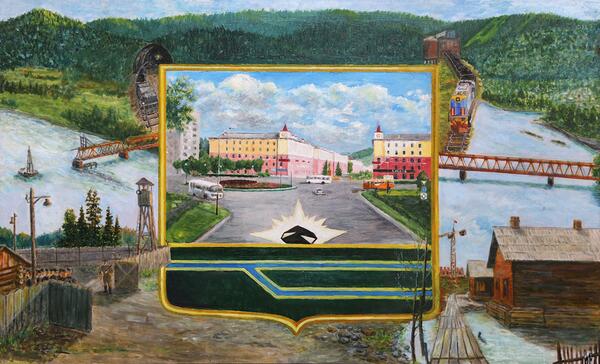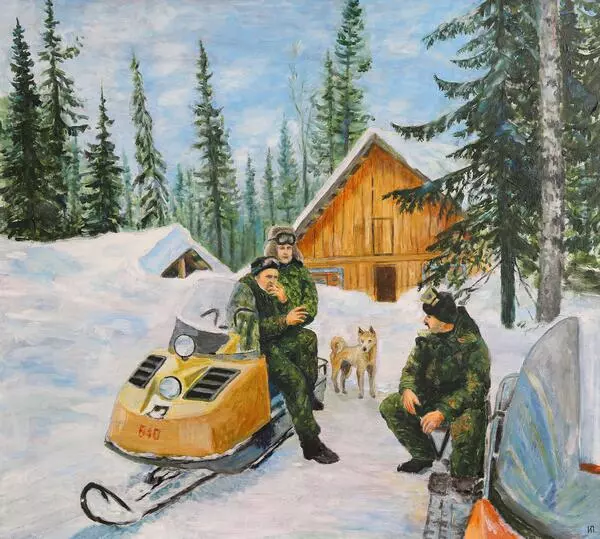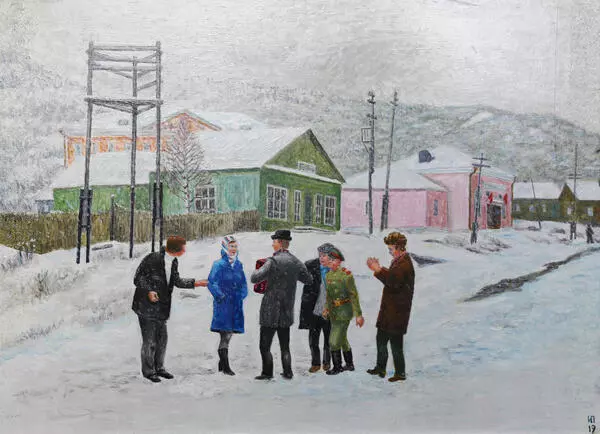Ivan Nikiforovich Pospelov was a talented painter. He was born in Novokuznetsk, in 1946, and has lived in Mezhdurechensk since 1950. He spent 30 years working in the V.I. Lenin and L.D. Shevyakov mines. He worked as a tunneling machine operator, shaft miner, and high-voltage electrician. After his retirement, full of enthusiasm, he took up an easel and palette, and started painting. Many of his works portray scenes from the mining industry. These include highly expressive portraits of miners, tunnelers and mechanics. His themed are expressed in the names of his paintings- change of Shift, Extracting the Black Gold, and Towards the light, towards the Sun.
The painting Mezhdurechensk, Past and Present is evidence of Ivan Pospelov’s interest in the history of his region, which plays an important role in his work. This work is, in its way, a record of the past as well as a work of art, — it tells a story of historical, cultural, socio-economic, national and local traditions. Using a language of symbols and metaphors, the artist makes subtle references to the unique character of the region’s natural environment and the main economic activities of the population.
In the central part of the canvas we see a shield, which, in its general outline and symbolism, brings to mind the city’s crest. Nestled inside the shield we see the modern Mezhdurechensk, a young but flourishing city that is deservedly known as the pearl of the Kuzbass. In the foreground we see the city’s main source of wealth — coal. And on the shield, forming a key element in the composition, there is also a piece of coal, and behind it a spark — together symbolizing fire, warmth, and light. At the bottom of the shield, the green area represents the forest, and the forked blue line represents the Rivers Tom and Usa, — the place where the rivers meet is the site of the pleasant city of Mezhdurechensk. Its first inhabitants called the city Tomusa.
If we take a closer look at the picture, we can glimpse the city’s future, as well as its past. The artist shows modern Mezhdurechensk against a background of various scenes that depict his region’s history — the Kamyshlag labor camp, surrounded by dense forest, the construction of the city in an area of marshland, and its dramatic growth into one of Russia’s main centers of coal production.
The painting Mezhdurechensk, Past and Present is evidence of Ivan Pospelov’s interest in the history of his region, which plays an important role in his work. This work is, in its way, a record of the past as well as a work of art, — it tells a story of historical, cultural, socio-economic, national and local traditions. Using a language of symbols and metaphors, the artist makes subtle references to the unique character of the region’s natural environment and the main economic activities of the population.
In the central part of the canvas we see a shield, which, in its general outline and symbolism, brings to mind the city’s crest. Nestled inside the shield we see the modern Mezhdurechensk, a young but flourishing city that is deservedly known as the pearl of the Kuzbass. In the foreground we see the city’s main source of wealth — coal. And on the shield, forming a key element in the composition, there is also a piece of coal, and behind it a spark — together symbolizing fire, warmth, and light. At the bottom of the shield, the green area represents the forest, and the forked blue line represents the Rivers Tom and Usa, — the place where the rivers meet is the site of the pleasant city of Mezhdurechensk. Its first inhabitants called the city Tomusa.
If we take a closer look at the picture, we can glimpse the city’s future, as well as its past. The artist shows modern Mezhdurechensk against a background of various scenes that depict his region’s history — the Kamyshlag labor camp, surrounded by dense forest, the construction of the city in an area of marshland, and its dramatic growth into one of Russia’s main centers of coal production.







